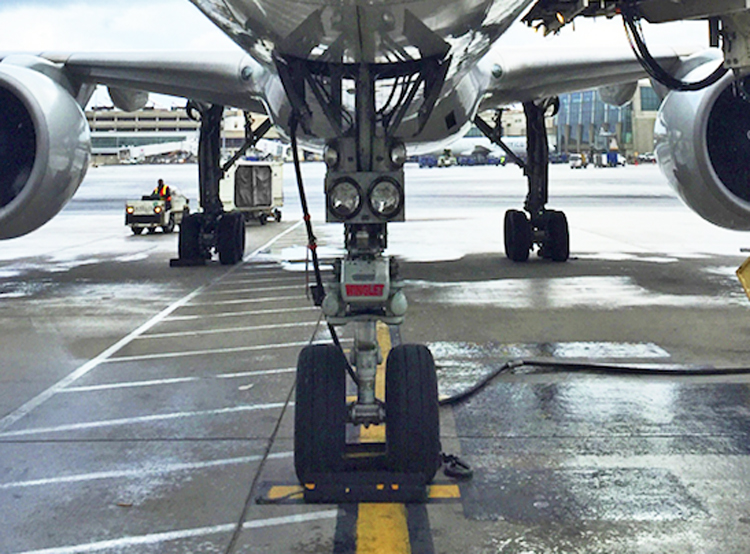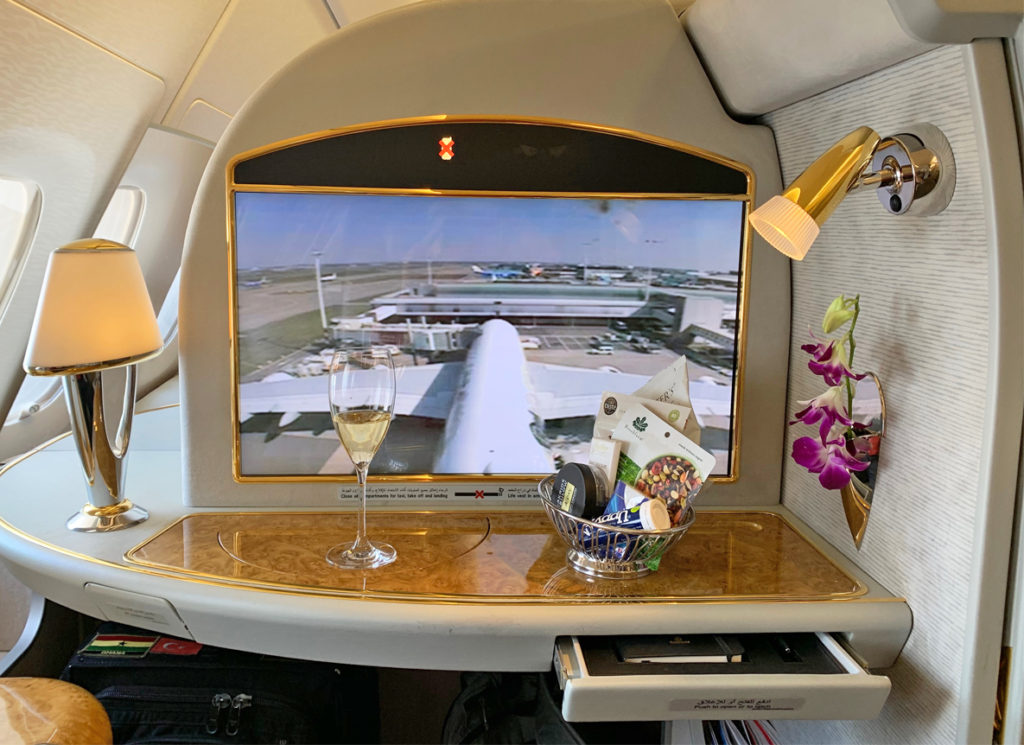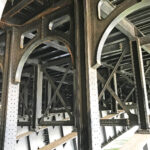Q&A With the Pilot, Volume 4

AN OLD-TIMEY QUESTIONS AND ANSWERS SESSION.
Eons ago, in 2002, a column called Ask the Pilot, hosted by yours truly, started running in the online magazine Salon, in which I fielded reader-submitted questions about air travel. It’s a good idea, I think, to touch back now and then on the format that got this venerable enterprise started. It’s Ask the Pilot classic, if you will.
Q: Why is engine power cut back shortly after taking off? Takeoff is the scariest part of flying to me, and suddenly, only seconds after leaving the ground, it feels like the plane is falling.
Planes routinely use more thrust than is necessary to take off, and the output of the engines is routinely drawn back to what we call “climb thrust” or “climb power” after reaching a thousand feet or so. This saves wear and tear on the engines, reduces noise on the ground, and keeps the jet from overspeeding (there are speed limits, yes, varying with altitude or the departure procedure). The sounds and sensations of this cutback are sometimes quite noticeable, but trust me the plane is not descending, or even decelerating. It’s simply not climbing as sharply, and the rate of acceleration is reduced.
Q: Sometimes while a plane is accelerating for takeoff, there’s a repetitive, rhythmic thumping from below: bang-bang-bang-bang, all the way down the runway like we’re hitting a string of potholes. A friend tells me this is an indication of flat spots on a plane’s tire, or a tire that isn’t inflated properly.
Another good reason to ignore your friends. What you’re hearing is the plane’s forward landing gear — its nose tires — hitting the recessed lights along the runway centerline. These centerline lights are inlaid flush with the pavement, but they’re not that flush and almost always you can feel them. One technique is to track a few feet off-center. The takeoff roll is seldom perfectly straight, however — especially during strong crosswinds — and so the bumps might start and stop, start and stop.
Q: I understand that a plane’s control wheel or side-stick is used for turns during flight, but what about on the ground? Is this same method used to guide a plane along taxiways, like the steering wheel in a car?
The main control wheel or side-stick links only to the ailerons and has no function on the ground. Instead, steering is controlled mainly through use of a tiller — a steering wheel-like device that is side-mounted near the pilot’s knee and connected to the forward (nose) landing gear. On some planes only the captain’s side has a tiller; other planes have them on both sides. The rudder pedals also have limited control over the nose gear. Pedal steering is used during takeoff, and after landing until the plane has reached a safe taxi speed. The plane I fly has a tiller only on the captain’s side. After one of my extremely smooth landings I can easily maneuver the jet clear of the runway using the pedals. The captain then takes over with the tiller.
Q: On the ground, can a plane move backwards under its own power?
A plane’s wheels are equipped with highly sophisticated brakes and anti-skid technology, but they are not geared or directly driven like the wheels of an automobile — such hardware would be heavy, complicated, expensive, and then only of marginal use. The tires roll free; the plane moves only in the direction that engine thrust tells it to move. Thus, give it enough reverse thrust, and sure, a plane can be made to roll backwards. For reasons of both cost and safety, however, this is almost never done. Instead, a tug is used.
American Airlines was among a few carriers that once authorized so-called “powerbacks” for its MD-80 series planes. The MD-80 was a good choice for this, as its engines are aft-mounted and high off the ground, keeping jet blast clear of people and equipment. Still, while it saved a little time and reduced wear and tear on the nose-gear struts, it wasn’t worth the ruckus and added fuel costs. Also, directional control is difficult and braking has to be managed carefully. Rolling backwards, a tail-heavy plane is liable to tip on its rear end if the brakes are applied forcefully enough.

There’s usually a small team of dudes or dudettes that pushes the plane from the gate. One of these people is connected to the cockpit via a headset. The apron or ground controllers will sometimes give complicated pushback instructions — and/or they will change them in the middle of the push — so the pilots needs to let the ground team know where, exactly, to maneuver the plane. The ground team lets the pilots know when its safe to start the engines, and then verifies that the tug has been safely disconnected from the landing gear.
Q: I was reading about a 747 that lost all four engines after flying through volcanic ash over the Pacific several years ago. That got me thinking. If a 747 or other large plane is forced to glide, how far can it travel, and how much control would the pilots have?
Well, from 30,000 feet you could figure on a hundred miles worth of glide, give or take. Failure of all engines is, to be clear, a full-blown emergency, yet there’s no more a prospect of instant calamity than taking your foot off the accelerator when coasting downhill in a car. The car keeps going and a plane will too. In fact the power-off performance of a large jet is better than that of a light Piper or Cessna. It needs to glide at a considerably higher speed, but the ratio of distance covered to altitude lost — close to a 20:1 ratio — is almost double.
While it may surprise you, it’s perfectly routine for jets to descend at what a pilot would call idle thrust, i.e. with the engines run back to a zero-power condition. They’re still operating powering the various systems, but providing very little push — not a lot different from switching them off entirely. You’ve been gliding on almost every flight without knowing it.
As for control capability, that depends on the aircraft type. An airplane’s internal systems are powered hydraulically, electrically, or pneumatically, and they react differently to power failures. Multiple engine loss will render many components inoperative, but no aircraft will tumble from the sky. They all can glide. On some aircraft, multiple engine failure causes a small wind turbine to utomatically deploy into the slipstream to help provide control authority.
Total engine loss is about as probable as a flight attendant volunteering to give you a shoe-shine, though it has happened:
Southern Airways flight 242 (1977). Hail and water ingestion. Fatalities: 72
United flight 173 (1978). Fuel exhaustion/negligent fuel management. Fatalities: 10
British Airways flight 009 (1982). Volcanic ash. Fatalities: 0
Air Canada flight 143 (1983). Human error and fuel exhaustion. Fatalities: 0
TACA Flight 110 (1988). Severe rain ingestion. Fatalities: 0
KLM flight 867 (1989). Volcanic ash. Fatalities: 0
Varig flight 254 (1989). Crew error and fuel exhaustion. Fatalities: 13
SAS flight 751 (1991). Severe ice ingestion. Fatalities: 0
Ethiopian Airlines flight 961 (1996). Hijacking and fuel exhaustion. Fatalities: 125
Hapag-Lloyd Flight 3378 (2000). Crew error, mechanical problem, fuel exhaustion. Fatalities: 0
Air Transat flight 236 (2001). Mechanical problem and fuel exhaustion. Fatalities: 0
British Airways flight 38 (2008). Fuel system problem. Fatalities: 0
US Airways flight 1549 (2009). Bird strike. Fatalities: 0
LaMia flight 2933 (2016). Fuel exhaustion/negligent fuel management. Fatalities: 71
That might seem like a pretty long list, but in the grand scheme of things such events are exceptionally rare. And notice all those zeroes. (The Ethiopian incident in 1996 would have had a much better outcome had the hijackers and pilots not been wresting for control at the time of impact.)
The British Airways incident in 1982 occurred after an encounter with an unforecast ash cloud from Indonesia’s Mount Galunggung. The crew managed to re-start three of the engines, then pulled off a nighttime, non-precision localizer approach into Jakarta even though the ash had scraped up the windscreen to the point where visibility was almost nil. Captain Eric Moody, in one of aviation’s all-time greatest quotes, described the landing as, “a bit like negotiating one’s way up a badger’s arse.”
Q: What do you think of this great idea: The plane should have a video camera aimed through the cockpit windshield, with the view wired into the seatback video screens letting passengers see what the pilot sees.
What I think is this already exists. Many airlines — alas, most of them outside the United States — display one or more camera views on the seatback screens. Often there are multiple angles, and passengers can click between them. There are cameras showing what the pilots see, others that point straight down. Sometimes there’s one aimed backwards, off the tail, providing an unusual, some would say harrowing view of the ground falling away during takeoff. It depends on the aircraft and airline. You’ll typically find this on the A330, A340, A380 and 777.
For a while in the 1970s, American Airlines had a camera mounted on the aft cockpit wall of its DC-10s. The view was projected onto the bulkhead movie screen and passengers could watch the pilots doing their thing during takeoffs and landings. The footage could be grainy and washed out, but it was, for its time, quite a novelty.


Q: Why can’t video cameras be embedded at various places on the exterior of the aircraft as a means for the pilots to evaluate the condition of the aircraft?
There are a lot of little things in aviation that could, or should, be standard, but aren’t for reasons that almost nobody can fathom. Things in aviation progress glacially, and are generally about ten generations behind whatever the rest of technology (and common sense) is doing.
But, to be fair, it’s also because merely seeing something doesn’t necessarily tell you how or if it’s working properly. Because a set of landing gear is visibly extended does not mean that it’s locked in place or otherwise is fully operational. In a lot of ways, the gauges and status screens in the cockpit are more valuable than what some poor-quality video might show. All of that said, some newer planes do have exterior cameras to assess the condition of landing gear, wingtip clearance and whatnot.
ALL PHOTOS BY THE AUTHOR
EMAIL YOUR QUESTIONS TO patricksmith@askthepilot.com
Related Stories:
Q&A WITH THE PILOT, Volume 1
Q&A WITH THE PILOT, Volume 2
Q&A WITH THE PILOT, Volume 3
Q&A WITH THE PILOT, Volume 4
Q&A WITH THE PILOT, Volume 5
Q&A WITH THE PILOT, Volume 6
Q&A WITH THE PILOT, COVID EDITION
Portions of this post appeared previously in the magazine Salon.

PHOTOS BY THE AUTHOR





Leave a Comment
Maximum 1500 characters. Watch your spelling and grammar. Poorly written posts will be deleted!
21 Responses to “Q&A With the Pilot, Volume 4”
You are viewing newest comments first. Click to reverse order
Hi Sir/Mam,
I Am A Student Studying In Class 9 And I Want To Know Can I Do The Class 2 Medical Test Cause I Am Curios To Know whether, I Will Choose The stream Of Flying And Becoming a Pilot Or Not.
I Have An Aspire To Become A Pilot.
Also It Could Be A Huge Problem For Me As I Am Thinking what Career Option To Choose In The Future.
Hope You Please Reply!
What are the different sounds/bells/beeps? The words I knew. But the bells I dont. What is used to let the attendants know there might be some issues in the cockpit?
Also is it necessary to study a-level physics to become a commercial pilot?
HI;
Several years back I flew from JFK to BDA on a L-10ll had breakfast for a relatively short flight under 2 hrs.
But on way back to JFK on an old 727 while serving meals pilot discontinued dinner and said that we will be arriving into JFK early. Was this due to some kind of southeast tailwind pushing us quicker into JFK????? Just don’t understand why the captain would do this, never happened before. This happened in the 80’s when almost all int’ll flight had to have a meal. Thanks, Tom
Would the execution of the steps required to overcome a Runaway Stabilizer condition been the solution for the recent 737-MAX crashes? The Lion Air aircraft that crashed, the day before has had the same problem as the day it crashed caused by the faulty MCAS sensor, but had a different flight crew who did successfully use the steps for a Runaway Stabilizer, i.e.; Cut the Autothrottle, cut the Autopilot, cut the Auto Stab trim and then adjusted the Stabilizers by hand.
My apologies for posting my question in the wrong place.
“Captain Brian Moody, in one of aviation’s all-time greatest quotes, described the landing as, “a bit like negotiating one’s way up a badger’s arse.”
Leave it a Brit to come up with that gem!!
Or Eastern 855 where the mechanics didn’t install the oil seals right; lost all 3 engines but restarted one and landed OK. https://en.wikipedia.org/wiki/Eastern_Air_Lines_Flight_855
American Airlines was among a few carriers that once authorized so-called “powerbacks” for its MD-80 series planes.
Northwest did this with their DC-9s. I saw it at DTW, specifically on the Terminal side of the McNamara “A” concourse. Definitely disconcerting because the plane would move forward a bit before the thrust reversers deployed.
Did you leave out Pinnacle flight 3701 on purpose? I guess it is kind of a bad example.
Patrick, you wrote “… is about as probable as a flight attendant volunteering to give you a shoe-shine, though it has happened:”.
Then you fail to cite the time someone got that shoeshine. I hope it’s covered in the new book, ’cause I bought one.
Hi Patrick, I flew several European companies (Iberia is one that comes to mind) that had the cameras to allow passengers to see forward and back. Why is that not done here with the American carriers?
I also like to listen to the flight radio (United usually offers that) but it is also not a popular feature and oftentimes it is not working on United flights.
Are airlines trying to keep us in the dark? 🙂
The TACA Flight 110 incident is most interesting because they managed to land not on a runway but on a levee near New Orleans! I learned of this watching the Air Crash Investigation/Mayday episode on the incident. They mentioned that the aircraft was still flying so I googled the registration number only to discover it was still in use by Southwest Airlines and not only that it was on approach at that very minute to SeaTac airport which I live under the flight path to!
The “Gimli Glider” (AC143), which landed — with its nose gear unextended — at the disused Gimli air-force base in the midst of a go-cart race, went on to fly with the airline for a quarter of a century.
“While it may surprise you, it’s perfectly routine for jets to descend at what a pilot would call idle thrust, i.e. with the engines run back to a zero-power condition. ” — I just got back from LAX and the Hertz lot is right in the approach path. A landing Emirates A380 flew directly overhead and I could see the “nosecone spirals” on at least two of the engines . . .
I love “dudes or dudettes”. For the 2020 edition of Q&A, should U.S. airports assign gates more dynamically as is done in Europe? Would this lead to more efficient gate allocation? Would it address the “arrived early now we’re waiting on the tarmac for 20 minutes” situation?
Is the list of engine-out flights only scheduled commercial flights? Because it’s missing some legit transport aircraft crashes, e.g.
https://en.wikipedia.org/wiki/LaMia_Flight_2933
and wouldn’t this qualify? Crew error sure, but “I screwed up how much gas we’re using” vs. “turned off the wrong engine” is the same thing:
https://en.wikipedia.org/wiki/TransAsia_Airways_Flight_235
Thanks for the catch on the LaMia crash. That was a nonscheduled charter, but I’ll add it to the list.
I’m gonna leave TransAsia off the list, however. That way that accident happened, just a few seconds after takeoff, it really isn’t in keeping with the spirit of the discussion. There also was the British Midland 737 crash in the UK some years ago, when the crew shut down the wrong engine due to a cross-wired warning system.
One other thing I have also noticed while taking off in a plane is a distinctive buzzsaw sounding grind from the engines when accelerating down the runway. I have come to recognize this sound especially with the Boeing 737NG series, and I believe that the sound is coming from the fan-blade tips going supersonic since it uses a high bypass engine. I also usually sit forward of the engines too.
Odd, I associated it (from the ground) with the A320 series. “Buzzsaw” is a good word. Very harsh.